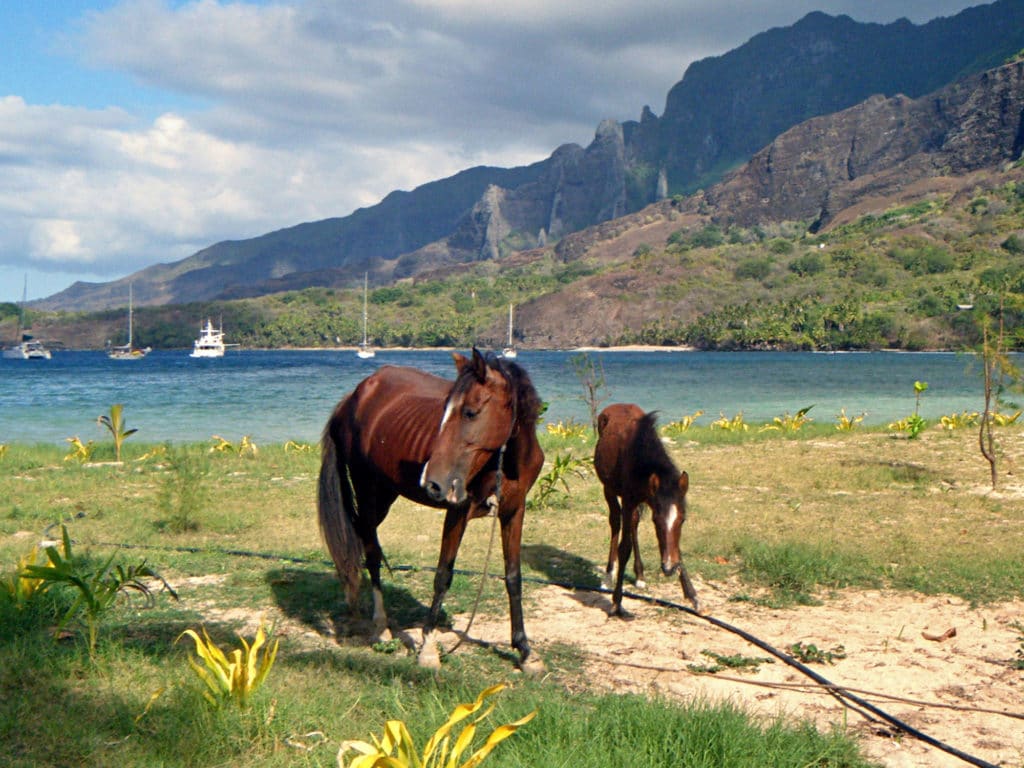
Part of the preparations for any cruise to the South Pacific is considering what to bring for gifting and trading. We’re expecting to visit two countries in the South Pacific this year—French Polynesia and Fiji—so we are going to tailor our trading plans for those two distinct cultures.
In the Society Islands of French Polynesia, there’s access to “stuff.” As a result, local people want cruisers to deal in cash, not goods. The kind of trading romanticized in the pages of decades-old cruising memoirs mostly doesn’t exist anymore. The Society Islands are well-connected to the population hub of Tahiti. If you can’t find a product in Papeete , it can be shipped or flown in, and then shuttled out in a mail boat.
Now, if we were heading to Fatu-Hiva in the Marquesas Islands, our plan for trading would be different. Fatu-Hiva is 125 nautical miles upwind from Nuku Hiva, and the locals prefer to trade goods instead of cash. Cameron Vawter, visiting there aboard the 43-foot Ta Shing Banyan, recalls how a boat in the anchorage that could trade received copious amounts of fruit for days on end. “It just kept showing up,” he said. He was happy to accept the trickle-down extras.
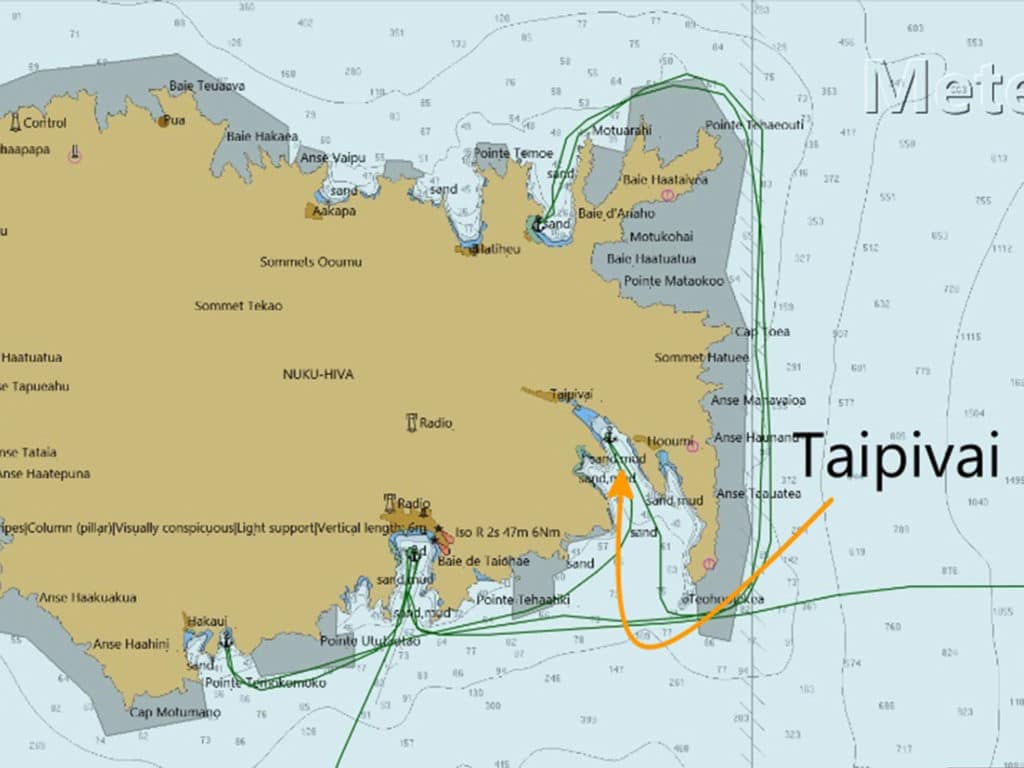
And no matter the location, there’s a difference between gifting and trading. Gifts from visiting cruisers show appreciation and build bridges, while other goods that cruisers keep on board are for bartering.
A model for understanding the idea of gifting as a cruiser can be found in one of my favorite memories from our month in the Marquesas in 2010. Anchored inside Baie du Contrôleur, we followed the sound of church bells into Taipivai with our bungee boat, Capaz. After the service, a family invited us to their nearby home. We broke out a deck of Uno cards, and we played a game with the Marquesan kids. Then, we gifted them the deck. Small stowage required, priceless memories, good feelings all around.
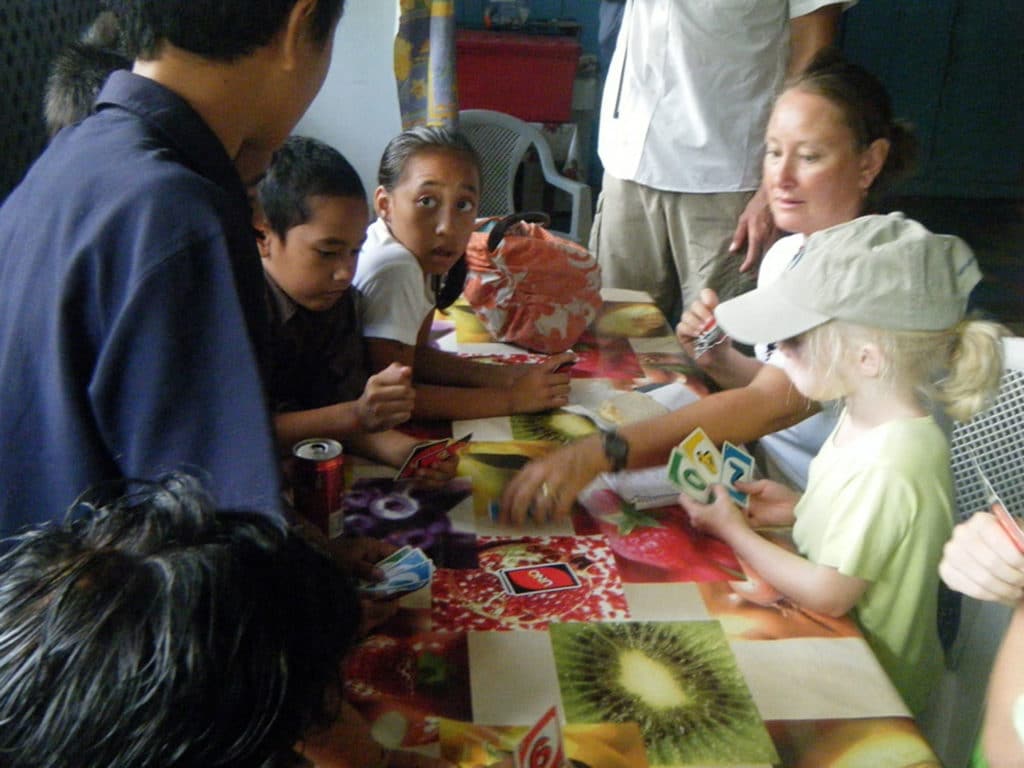
Aboard the Allied 39 Jacaranda, Chuck Houlihan says, “we quickly came to realize that we wanted to have nicer gifts for folks that invited us home for dinner, took us fishing and just befriended us.” He and his wife, Linda Edeiken, recommend trading practical items, such as Luci lights, jiggle-hose fuel transfer devices and carving tools such as Dremels and sandpaper.
Greg Bridges aboard the Gulfstar 50 Beach Flea has also learned that carving tools, as well as multihead screwdrivers, pliers and hammers, are local favorites. He finds that 90- and 60-degree V-gouges and small skews are the most useful.
Our favorite gift to trade
Our favorite icebreaker gift (and occasional trade item) is a soccer ball. We started engaging in Soccer Ball Diplomacy—trademark pending—after leaving Australia in 2012. From Papua New Guinea to Madagascar, the soccer balls we brought to shore replaced carved, ball-sized fishing floats. Our gift amped up many a dirt field game. I cannot emphasize enough the joy these brought.
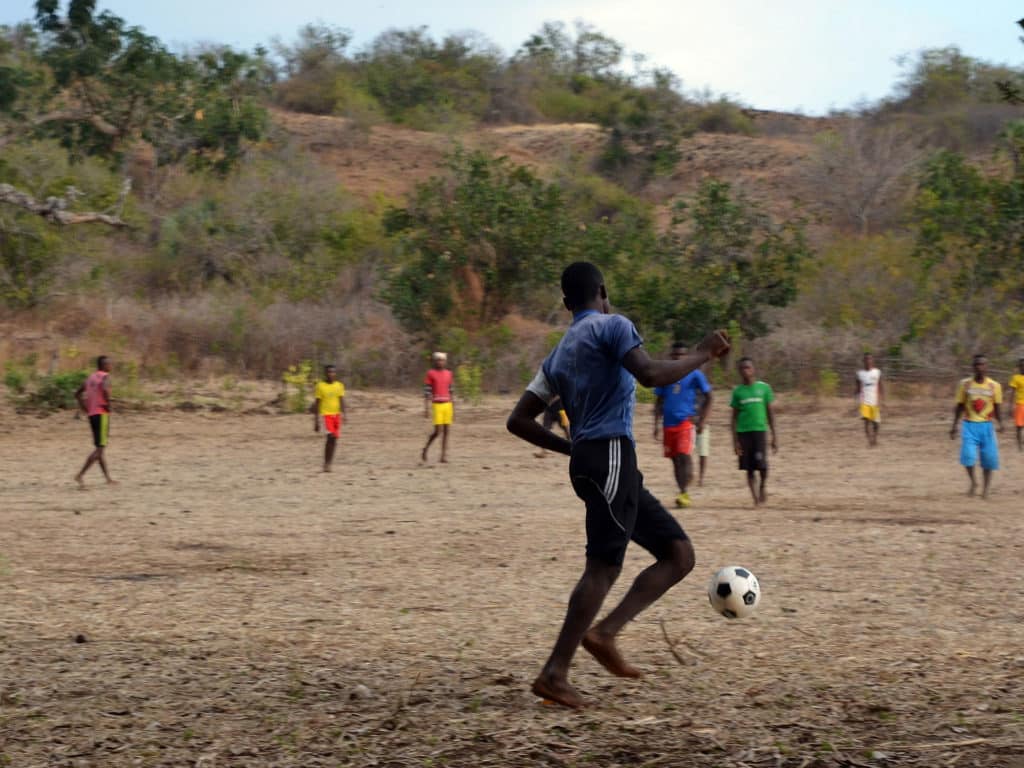
Something else I am excited to stash for literally brightening lives is headlamp-style utility lights (they snap onto a solar charging block and turn into a flashlight). Yes, the same folks who make those awesome Luci lights make these. In more remote communities in the North Pacific, lights like this can have a meaningful, positive impact on everyday life for a family.
What’s a trade item worth?
One of the big questions a new-to-trading cruiser in the South Pacific has is: How do you establish relative value?
Back in the intensive trading culture of Papua New Guinea, I came up with a way to think about establishing a fair trade. Some thoughts adapted from our 2012 post:
Think about what you’d pay to buy something if you could, and what it cost you to get what you’re offering. Is that pineapple, which might be $5, a fair trade for the 1 kg bag of sugar that might have cost you $1.50? You can think about it in terms of the value of the items, but think of it this way, too: When the only way for you to get a fresh pineapple, and the only way for them to get a bag of sugar, is to trade, that’s a way to estimate how close or far you are from what’s reasonable. I remember giving a guy in Kavieng, Papua New Guinea, a 2-kg bag of rice for a couple of lobsters one day. He was thrilled and insisted it was too much, then showed up the next day to give us three huge, beautiful papayas from his garden. Wow!
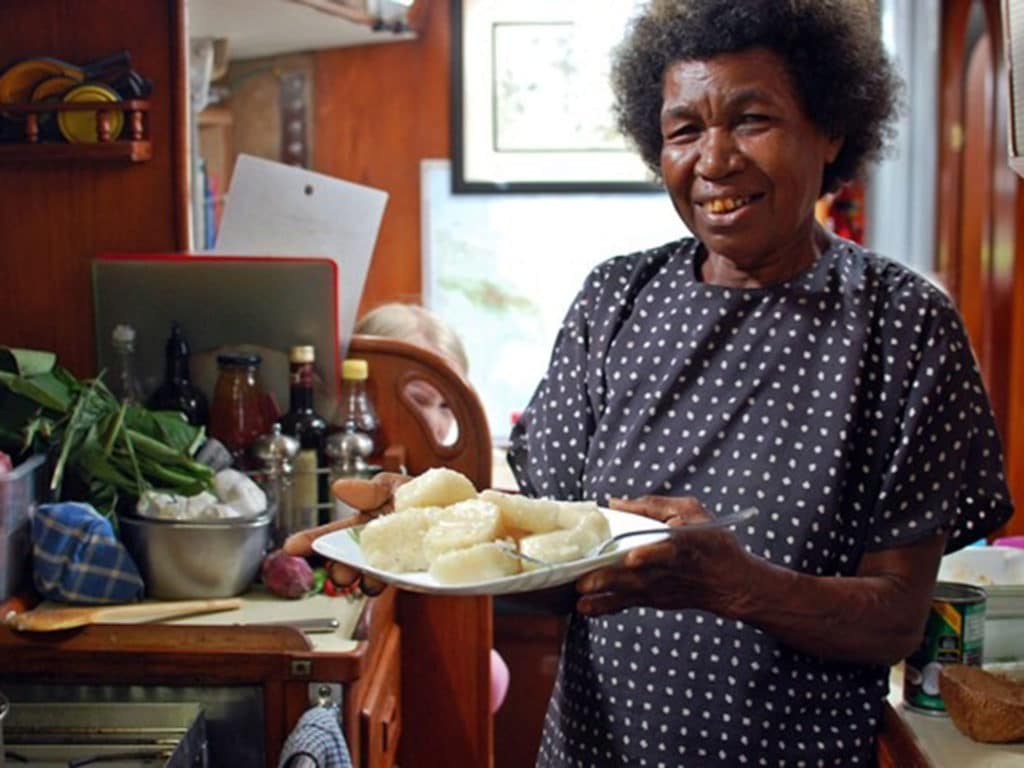
Trade items to bring
For the list-makers (cough “me” cough), here’s a summary of what to stow: Dremels, diamond bits and other carving tools; commonly used hand tools; rope that still has life in it (just maybe for a horse instead of a halyard); headlamps and solar-powered lights; fishing gear, such as big hooks for tuna, little ones for reef jigging; small-woven line for fishing (not fishing nylon); snorkeling masks and fins; soccer balls (and pumps with spare needles); perfumed lotions, nail polish and lipstick (these can add value to a trade for pearls in the Tuamotus); and fuel and jerry cans.
More on trading
If you’ve liked reading about trading in the South Pacific, where actually there’s not so much trading going on (sales for cash are vastly preferred), you might enjoy reading these other posts about the trading we did in Papua New Guinea. In those islands, trading with the latest dugout to tie off your transom is part of everyday cruising life.
What to bring to Papua New Guinea. This list that diverges a bunch from other South Pacific gifting and trading lists. It’s based on real need and lack of access to what we consider basics, such as flour, sugar and yeast.
What you’ll be trading for in Papua New Guinea: Sometimes, the ability to trade what islanders need is what matters most. It can also be the only way to get fresh produce in islands without stores.
Alternative trading: When a new friend wanted flour and yeast, we had to trade, but with nothing to exchange, I traded for a cooking lesson on how to cook coconut-steeped yams. This strategy would work great anywhere.








